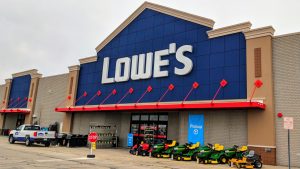Once upon a time, not so long ago, we watched eagerly out the window for the UPS truck, whose driver we knew by name, hoping today he’d finally deliver that mail order or online purchase made a week earlier. Today, you can drive through just about any residential neighborhood in the US, and for every UPS truck you might see, you’ll pass a dozen vans (Amazon, Walmart, Target, Kroger, Lowe’s among them) plus herds of rental trucks and unmarked cargo vans.
The next- or same-day last-mile delivery business has become an industry within the retail industry. For starters, it’s huge. According to the US Bureau of Labor Statistics, there were 1.7 million people employed as delivery drivers last year. By 2031, that number is forecast to grow to 1.9 million.
The competition is fierce.
By some estimates, 75% of customers will spend more and be loyal to brands that offer an excellent last-mile experience. The race has cost retailers a fortune in warehouse investments, trucks, and technology.
Even Amazon, which invented its own warehouse management and delivery technology, is still spending big. Last November, the company said it had 1,000 Rivian electric vans (EVs) on the road and had placed an order for 100,000 more by 2030, an outlay that should run about $5 billion (assuming a discount from the retail price of $60,000 each).
This summer, Walmart reported that it has a “private fleet” of 13,000 drivers and ordered 4,500 electric vans from Canoo, a startup manufacturer. Earlier this year, the company plans to invest in a “dedicated EV fast-charging network” at thousands of Walmart and Sam’s Club locations nationwide.
Target finds itself in catch-up mode. Well into this delivery revolution, the company is still trying to figure out how to make it work, announcing a new distribution strategy in May: opening new small-format stores (“flow centers”) and locations in denser urban areas.
The urgency to compete on delivery has given birth to a sub-industry of logistics vendors who combine artificial intelligence software and smaller fleets of trucks for retailers without the deep pockets of significant mass merchandisers. The more you read about these companies, the more it feels like the Wild West. For example, Swedish Home Dash & Delivery advertises delivery services specifically for customers of IKEA, which has its own fleet of delivery trucks.
What we don’t know is even more interesting. How much is all this infrastructure actually costing?
A bit of research shows that no companies break out such statistics from their financial reports. Are these retailers making money on delivered merchandise, or is it a costly branding exercise? According to one source of the total shipping expense to get that air fryer you bought shipped from Asia, across the Pacific, to a warehouse near you, and finally dropped on your doorstep, the last mile is about 50%.
Maybe the most challenging question to answer is about where this is all headed. Do we need dozens of delivery systems competing with each other? If everyone is doing the same thing, where is the competitive advantage? Does the customer even want it if they had to pay for the fully loaded cost?
As a retail industry veteran and technologist who believes people still like to go to stores and be able to touch and compare the merchandise, what happens when online shopping peaks? Or, worse yet, normalizes? Ecommerce growth is already slowing. What happens when there’s no more room to grow?
What happens if consumer sentiment changes and fast delivery conflicts with their waste and climate change concerns? What happens if they actually have to pay for the added costs?
Worse still, what happens when the next serious recession comes along, and retailers are saddled with billions in debt owed on idle assets?
I’m wondering who is modeling all that out and why equity analysts aren’t asking these companies the tough questions.
Read the full article here









